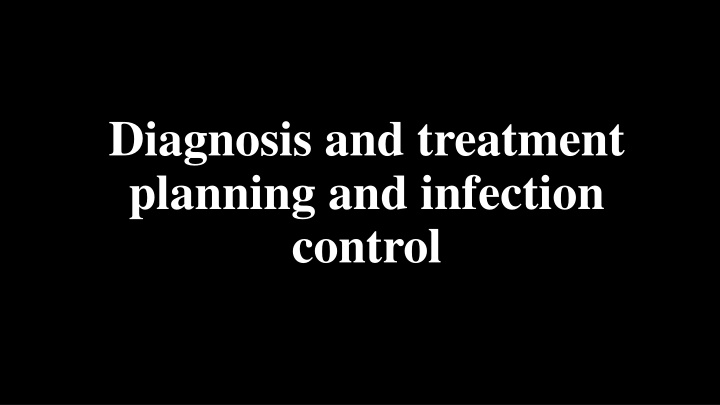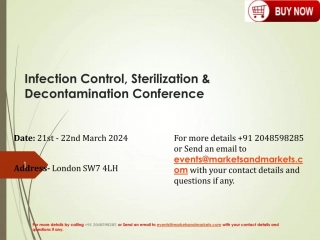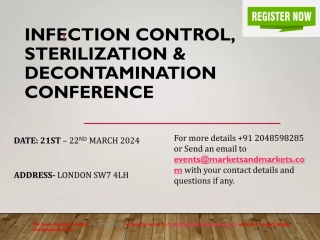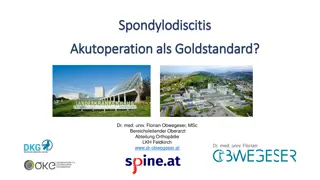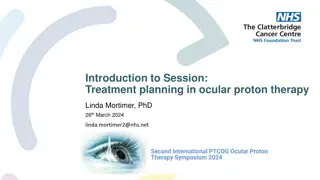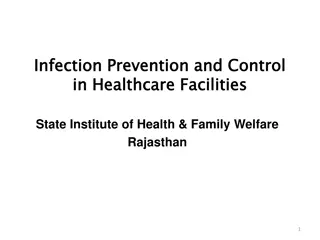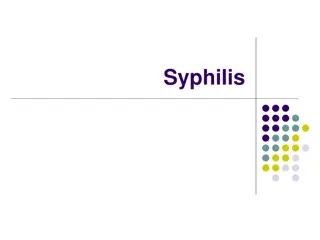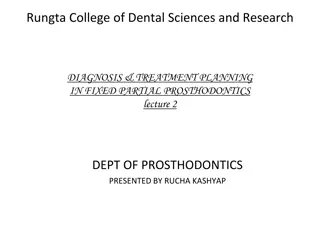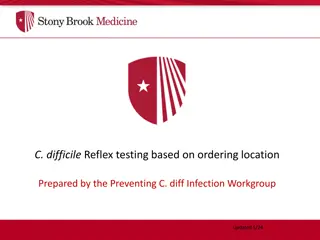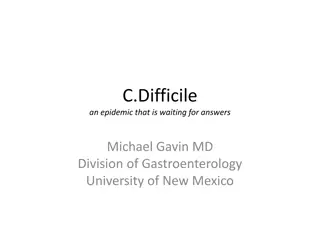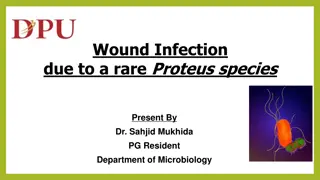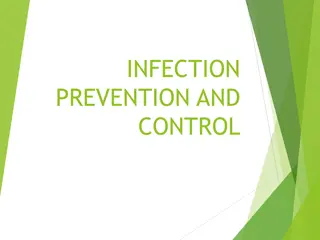Diagnosis and treatment Planning and infection control
Examination procedures for patients requiring removable partial dentures (RPD), including clinical and visual examinations to assess caries susceptibility, tooth positions, soft tissue conditions, and occlusion. Digital examination evaluates tooth firmness and mobility for treatment planning.
Download Presentation

Please find below an Image/Link to download the presentation.
The content on the website is provided AS IS for your information and personal use only. It may not be sold, licensed, or shared on other websites without obtaining consent from the author.If you encounter any issues during the download, it is possible that the publisher has removed the file from their server.
You are allowed to download the files provided on this website for personal or commercial use, subject to the condition that they are used lawfully. All files are the property of their respective owners.
The content on the website is provided AS IS for your information and personal use only. It may not be sold, licensed, or shared on other websites without obtaining consent from the author.
E N D
Presentation Transcript
Diagnosis and treatment planning and infection control
Examination The procedure for examination of the patient requiring R.P.D consists of a thorough and systematic investigation of the structure of stomatognathic system and the symptoms presented by the patient. A systematic examination is usually started with: 1. The patient needs or complain 2. Clinical examination 3. Radiographic examination 4. Diagnostic cast "study cast"
Clinical examination Clinical examination 1. Extraoral examination Face Deformity , symmetry , eye and sclera Visual examination Position of the lips 2. Intraoral examination Short or long lip Digital examination Mouth opening Deformity , symmetry , eye and sclera
Visual examination Intraoral examination visually we can estimate the following: 1. Caries susceptibility 2. Position of the remaining teeth and their condition 3. Condition of soft tissue 4. The occlusion of the teeth
Visual examination Intraoral examination the oral hygiene of the patient number of remaining teeth evidence of decalcification 1. Caries susceptibility number of restored teeth the presence of carious teeth
Visual examination Intraoral examination 2. Position of the remaining teeth and their condition Tilted Inclined
Visual examination Intraoral examination 3. Condition of soft tissue change in color of mucosa presence of inflammation swelling and ulcers
Visual examination Intraoral examination 4. The occlusion of the teeth retention between maxillary and mandibular arches extreme overlapping extrusion of teeth Inter-arch distances
Digital examination Intraoral examination 1. The firmness of the remaining teeth or mobility of teeth as mobile teeth are expected to be weak teeth and can not with stand the forces of the P.D cause of mobility either an occlusive trauma which will give ______ prognosis or inflammation of periodontal tissue which gives _________ prognosis
Digital examination Intraoral examination 2. Condition of periodontal tissue and presence of pocket and the depth of this pocket. usually measured by periodontal probe which shows the amount attachment of periodontal ligament on the surface of teeth
Digital examination Intraoral examination 3. The extent of caries caries can be detected by exploration of the occlusal surface of teeth using the dental probe also the teeth can be examined by tapping method. Also the sensitivity of teeth should be checked either electrically or chemically using (ethyl chloride).
Digital examination Intraoral examination 4. Condition of restored teeth broken filling (defected filling) or the presence of recurrent caries. 5. Condition of the soft tissue through palpation for any pain or swelling 6. Examination of the saddle area for number, location and quality of the residual ridge 7. The evaluation of the depth of lingual sulcus and the floor of the mouth.
Does The stone cast usually gives true determination of the depth of the lingual sulcus? Answer : no it will give a false determination Displacement of the tissue during taking impression
3 3. Radiographic examination: . Radiographic examination: A. the quality of the alveolar bone and the presence of retained roots, impacted teeth, cysts, tumors also the amount of bony support for the teeth therefore. the tooth which is clinically sound, may appear in the radiograph without bony support which give poor prognosis to use it as abutment Short rooted teeth will give us poor prognosis to use as abutment for R.P.D.
3 3. Radiographic examination: . Radiographic examination: B . the root morphology: Multiple divergent roots. Conical rooted teeth. the crown/root ratio.
3 3. Radiographic examination: . Radiographic examination: C . Bone loss and discontinuity of lamina dura which indicate and give us an idea about prognosis of the case and the periodontal inflammation.
3 3. Radiographic examination: . Radiographic examination: C . Caries extent especially proximal caries can be seen by x-rays. the x-rays which should be taken for a complete examinations: Orthopantomography. Full-mouth periapical. Bitewings "for proximal caries". Occlusal x-rays.
Diagnostic cast "study cast" Diagnostic cast "study cast" Diagnostic cast should be surveyed for the following purpose: 1. To see the path of insertion and removal of the R.P.D. 2. occlusal rest preparation. 3. reshaping of the abutment which include: Embrasure clearance. Excessive contour requiring reduction. Creation of undercut by disking and dimples or grooves, but all these preparation should be done within the enamel, if requires exposure of dentine then the tooth should be rounded, Acute angle should be rounded.
Diagnostic cast "study cast" Diagnostic cast "study cast" Diagnostic cast should be surveyed for the following purpose: 4. see the retentive and non retentive area of abutments. 5. preliminary designing of R.P.D.
the study cast should be mounted in the articulator for the following: 1. Assessment of occlusion for degree of over closure, the amount of interarch distance , for proper setting of the artificial teeth especially in region of tuberosity and retromolar area. 2. Extrusion of the teeth into the opposing edentulous area, also migration or rotation of the teeth into the adjacent edentulous area. 3. Viewing the occlusionfrom the lingual side as well as from the buccal side for proper placement of the occlusal rest, clasp arms, and minor connector. 4. The diagnostic cast can be used as a reference during treatment of the patient. 5. Fabrication of the special trays.
Treatment plan: Treatment plan: 1. Periodontal treatment and splinting of weak mobile teeth. 2. Oral hygiene habits 3. restoration of teeth 4. the need for surgery which includes: Removal of hyperplastic tissue. Removal of tori. Extraction of teeth.
Treatment plan: The extraction of teeth indicated in case of: 1. unrestorative teeth 2. When the presence of healthy tooth complicate the design of R.P.D "extremely inclined teeth mesially, lingually, and buccally". 3. unesthetically located teeth, therefore they are removed to improve appearance. 4. Orthodontic treatment.
Treatment plan: 1. fixed partial denture "crown and bridge" if we have Cl 1 with anterior modification it is easier for us to make fixed appliance anteriorly so we will get pure Cl 1 so handling with it more easier than that with modification. 2. Type of material used in removable partial denture. 3. Cost of the partial denture.
Prognosis Prognosis The prognosis is usually derived from the resistance of the tissue to the causative factor; therefore, the more resistance is the tissues to local factor. The more favorable is the prognosis.
There are certain factors we should consider in prognosis: 1. Age of the patient: when bone loss is comparable between young and older patients then the prognosis is more favorable for the older patient. 2. The number of remaining teeth: insufficient number of teeth provides poor foundation of the removable partial denture. 3. The height of bone of the remaining teeth : the higher the level of the bone. The better is the prognosis. 4. The shape and the length of the root and usually short and conical roots will give less favorable prognosis than multiple divergent root. 5. Mobility of teeth.
Infection control in prosthodontic Human mouth is first exposed to microorganisms during birth. Oral cavity supports one of the most concentrated microbial populations of the body. Prosthodontics treatment also demands a high degree of concern about cross infection through patients, personnel, unsterilized instruments and equipment s. Prosthodontics treatment undertaken in the clinics should be supplemented by the laboratory and hence cross infection chances have to be halted in both the fronts.
Infection control in prosthodontic A number of disinfection and sterilization procedure are available that claim to kill the microorganism. Efficiency of the method is not very often posted but the reactivity of the materials used in Prosthodontics possess problems of feasibility and decrease to accuracy. A careful selection of methods of sterilization and disinfections is essential in Prosthodontics and this work is an attempt to find out an optimum disinfection procedure.
Clinical and Laboratory Disinfection 1. Barrier system 2. Gloves 3. Utility gloves 4. Mask, protective eyewear, clothing
Disinfection of Impressions American Dental Association (ADA) guidelines state that impressions should be rinsed to remove saliva, blood and debris and then disinfected before being sent to the laboratory. When considering methods of disinfection for impressions, two factors are important: 1) the effect of the treatment on the dimensional stability and surface detail of the impression. 2) the deactivating effect of the impression material on the disinfecting solution, which could reduce the efficacy of the process.
Disinfection of Impressions Immersion disinfection has been preferred to spraying. Immersion is more likely to assure exposure of all surfaces of the impression to the disinfectant for the recommended time. Spraying disinfectants onto the surface of the impression reduces the chance of distortion, especially in the case of alginate, hydrocolloid and polyether materials, but may not adequately cover areas of undercuts. Thorough rinsing of the impression is necessary before and after disinfection. Rinsing before removes the bioburden present, which may prevent exposure of the surface to the disinfectant. Rinsing after disinfection removes any residual disinfectant, which may affect the stone surface after the cast has been poured.
ADA ADA- -recommended disinfectants recommended disinfectants Chlorine compounds such as sodium hypochlorite solutions (1:10 dilution), iodophors, combination synthetic phenolics: The impression should be handled carefully to prevent distortion. In order to remove any bioburden, the impression should be gently scrubbed with an artist's brush (one-half inch bristle) and a liquid detergent. Stubborn materials can be removed by scrubbing gently with dental stone sprinkled into the impression.
ADA ADA- -recommended disinfectants recommended disinfectants Reversible (Agar) and irreversible hydrocolloid (Alginate) materials: Spraying (Iodophors, sodium hypochlorite (1:10), chlorine dioxide ) Polyether impression materials Spraying (Sodium hypochlorite (1:10)) Silicone (vinyl polysiloxane) or rubber-based impression: Immersed in( any hospital-level disinfectant except neutral glutaraldehyde) Zinc oxide eugenol (ZOE) and compound impressions: Immersed ( 2% gluteraldehyde or a 1:213 iodophore solution for ten minutes) impression compound: Immersion ( sodium hypochlorite (diluted 1:10))
ADA ADA- -recommended disinfectants recommended disinfectants Impression trays: Plastic disposable trays used are discarded. Sodium hypochlorite can be used as a disinfectant on aluminium- or chrome-plated trays. But these trays should be monitored for corrosion. If corrosion occurs, an alternative disinfectant should be used. Impression trays can also be heated
